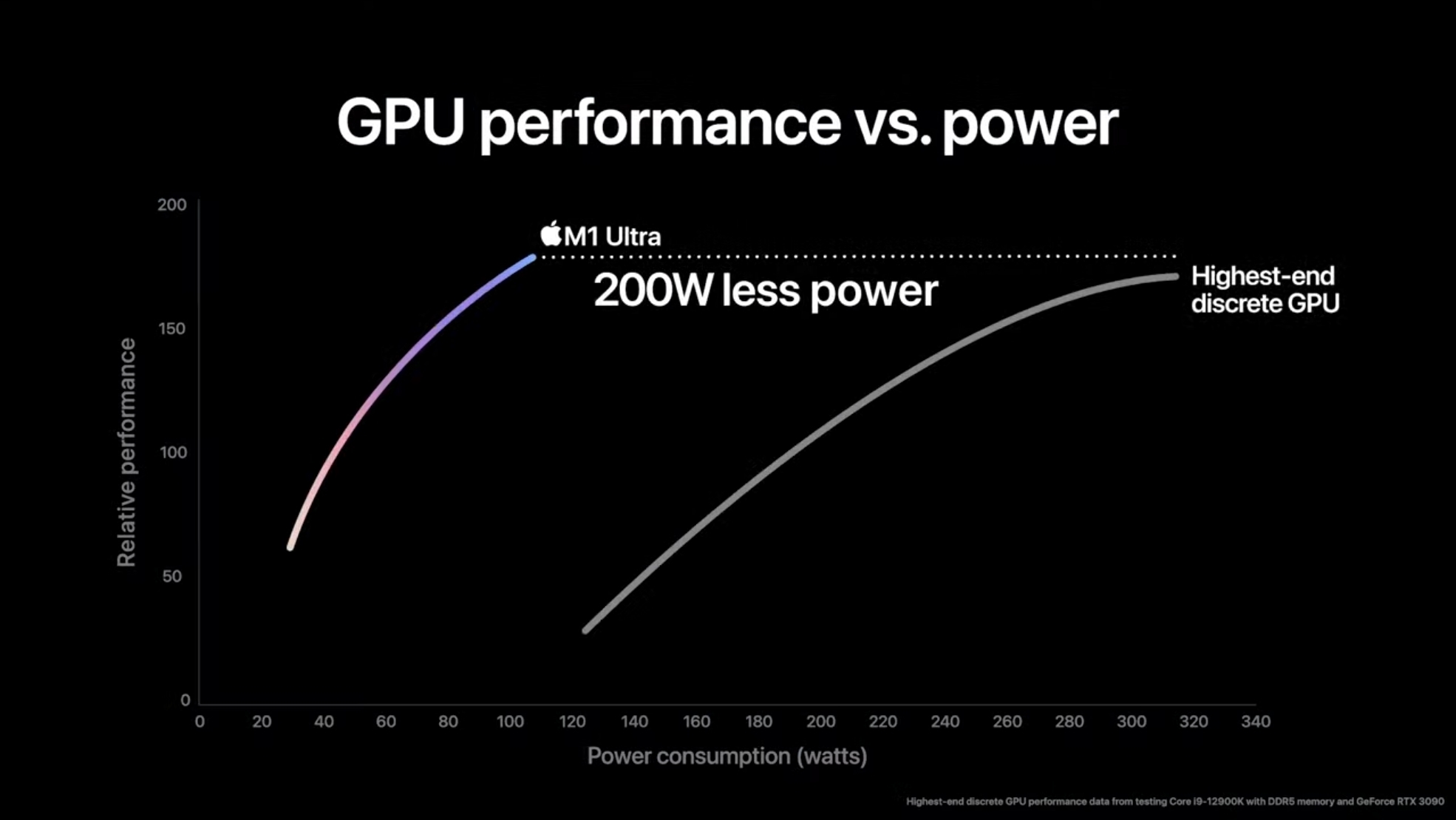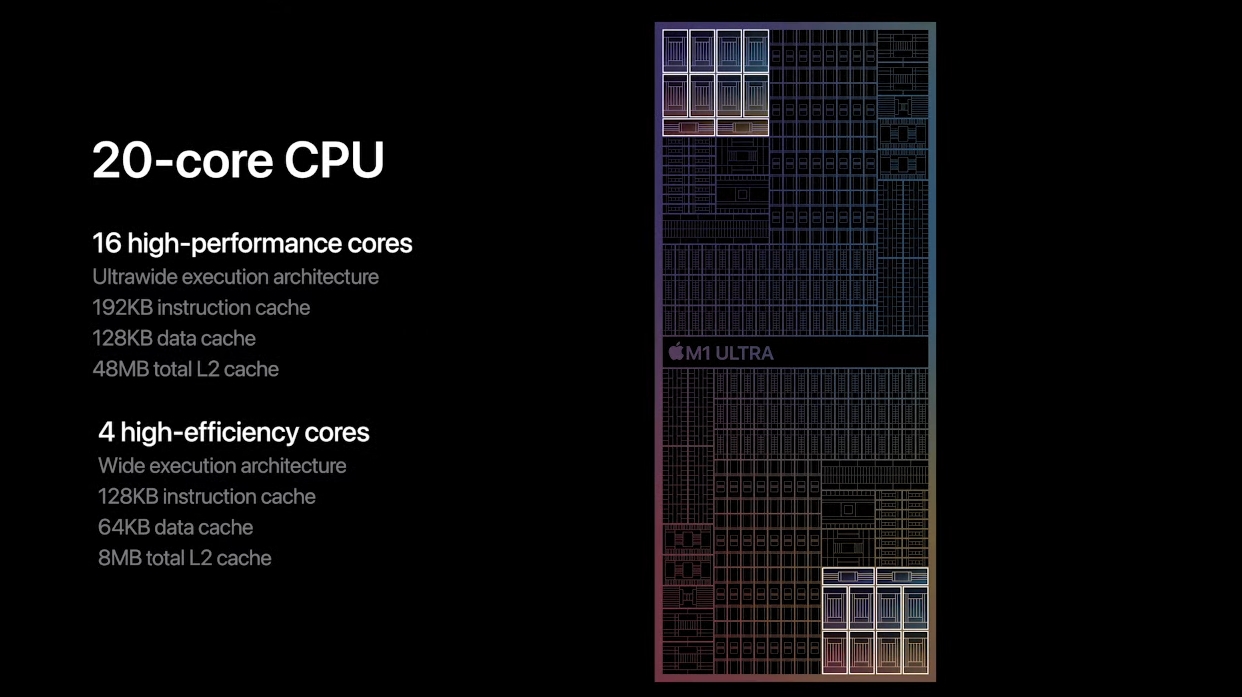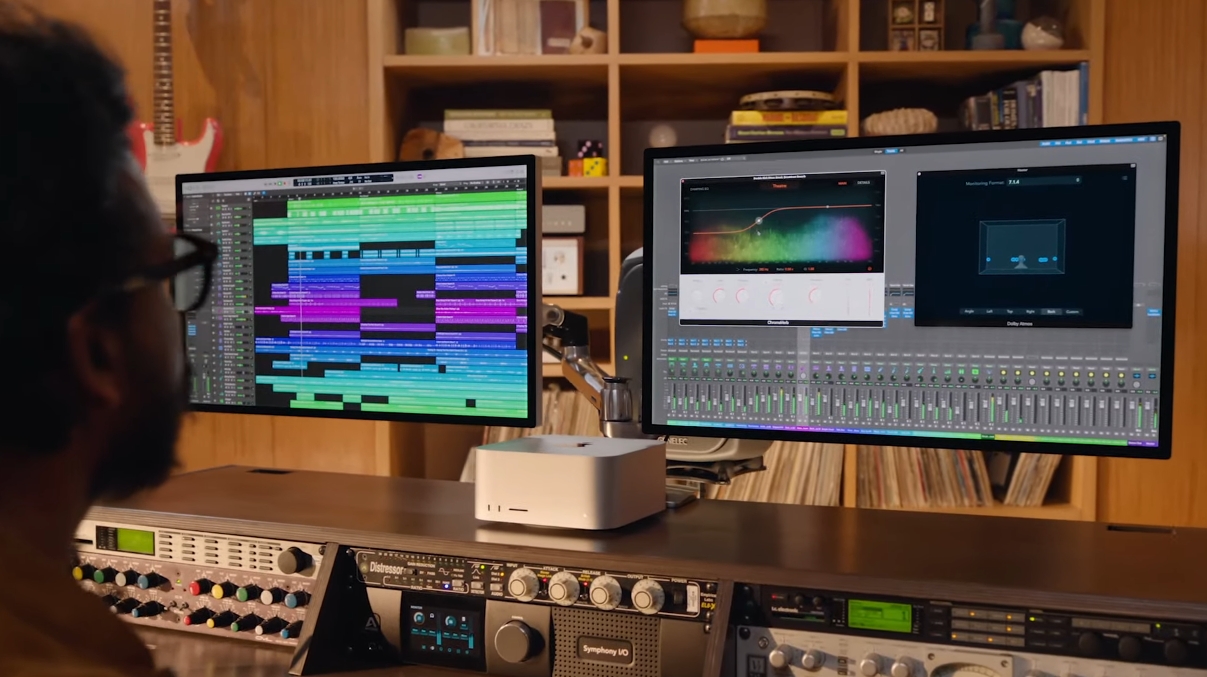Apple has announced an all-new high-end CPU at its March 2022 hardware event, the M1 Ultra. This processor's aim is to bring higher performance, likely to desktop PCs meant for creative professionals.
Apple claims that this is the biggest processor ever built, a feat it was able to accomplish by taking two M1 Max dies and bridging them with a new connector, which allows Apple to reach incredible performance without losing efficiency as the two chips are basically talking to each other.
The massive M1 Ultra chip has a GPU with 8,192 execution units, which would place it on the same level as an RTX 3080 from paper specs alone. We'll have to wait and see how it plays out in our tests, though.
Just like the rest of the M1 family of processors, the M1 Max is a system-on-a-chip design, which means the CPU, GPU, RAM, storage and media engine are all included in one big chip.
Unlike Apple's other SoC's, though, the M1 Ultra will only be available in the Mac Studio. An M1 Ultra-powered Mac Studio will start at $3,999 in the US, £3,999 in the UK, and AU$6,099 in Australia. It's available on March 18.

Better than an RTX 3090? We'll see
Among all the numbers Apple showed in the reveal for the M1 Ultra was a chart saying that the M1 Ultra could reach higher levels of performance as a system than an Nvidia GeForce RTX 3090 and an Intel Core i9-12900K, while consuming 200W less power.
It's a bold claim, but one we could see Apple actually delivering on, depending on how much power it's willing to pump into its desktop-class components. The M1 Ultra has a 64-core discrete-class GPU with 8,192 execution units. These have a different name, but would essentially be a similar concept to CUDA cores for Nvidia or Streaming Multiprocessors for AMD graphics cards.
With 8,192 EUs, that's right up there with the Nvidia GeForce RTX 3080 and AMD Radeon RX 6800 XT, so we wouldn't be surprised if the more efficient 5nm manufacturing process would be able to deliver even more performance on the same amount of compute units.

Specs to back it up
The GPU built into the M1 Ultra, with its 64 cores, is the big story of Apple's March 2022 event, to be sure, but the actual CPU is nothing to scoff at. With the M1 Ultra, you get a 20-core CPU with 114 billion transistors, making it one of the most dense processors ever built for a consumer-class device.
Those cores break down into 16 high-performance cores and 4 efficiency-cores. If you're unfamiliar, this follows the same kind of hybrid chip design as the M1 did. The high-performance cores are there to handle heavy workloads that need as much brute force as possible, and the high-efficiency cores work in the background to take care of background tasks as they appear.
The M1 Ultra, comparatively speaking, has many more performance cores for each efficiency core than the original M1 chip that appeared in 2020. Apple's first computing chip split its 8 cores down the middle, with 4 performance cores and 4 efficiency cores. That allowed the MacBook Air and 13-inch MacBook Pro to easily balance performance and battery life.
However, because the M1 Ultra is only in the Mac Studio, battery life isn't a concern. Apple can prioritize loading the chip with high-performance cores without adding more efficiency cores, because it simply doesn't need to take battery life into the equation. For the creative professionals that will be using the M1 Ultra, power is the name of the game.
This is also the Mac chip that will support up to 128GB of RAM, so it's clearly meant to power creative-class workloads like video editing and rendering, which demand huge amounts of RAM. That might sound like a lot of memory, but if you need that much RAM, you need it, and there's never going to be enough.
Apple was able to achieve this by smooshing two M1 Max dies together and bridging them via an interconnect, lovingly called UltraFusion. Apple claims that this has twice the connection density of any technology - again, we'll see - but it means that there's 2.5TB/s of bandwidth between the two main CPU chiplets, which should essentially eliminate lag between them, or make it so minimal that it's meaningless.
Apple also included a graph showing the raw CPU performance of the M1 Ultra against the Intel Core i9-12900K, which has a similarly-built CPU. Apple is claiming that it can double the Core i9-12900K's performance with much less power. That'd be incredible if it's true, as in our testing, the Intel Core i9-12900K is easily the most powerful mainstream desktop processor on the market right now. We just wonder how they compare to the new AMD Ryzen Threadripper Pro CPUs.

Studio fresh
If you're a creative professional that wants to harness the raw power of the M1 Ultra, you're going to be looking at the Mac Studio. It looks like a Mac mini but bigger, and is able to power this monster of a processor in a chassis that's just 3.7 inches thick and 7.7 inches long. That's just a little bit thicker than the Mac mini, and should keep your desk clear.
With the Mac Studio, which starts at $3,999 / £3,999 / AU$6,099 if you want an M1 Ultra-powered version, Apple is claiming that it'll feature 90% faster than an entry-level Xeon Mac Pro, and a GPU that is essentially 3 Radeon Pro 5700 XTs. All of that integrated into a single chip.
That's the only Mac with the new M1 Ultra processor, but that's not too terribly surprising. The amount of power that something like this would require is just too much for a mobile form factor, so it's unlikely that we'll ever see the M1 Ultra make its way into something like the MacBook Pro - at least not in its current iteration.
But, even though it's expensive with the M1 Ultra, it's still much more accessible than the Mac Pro. Though, to be clear, the M1 Ultra is only really going to be necessary for creative professionals that need an extremely fast processor to make their living. And, as such, the Mac Studio should be considered a professional-level device. Both of these things make the $3,999 price tag even more impressive, even though, yeah, you could get an equivalent Windows 11 desktop for less cash.
from TechRadar - All the latest technology news https://ift.tt/dNonXs0
No comments:
Post a Comment